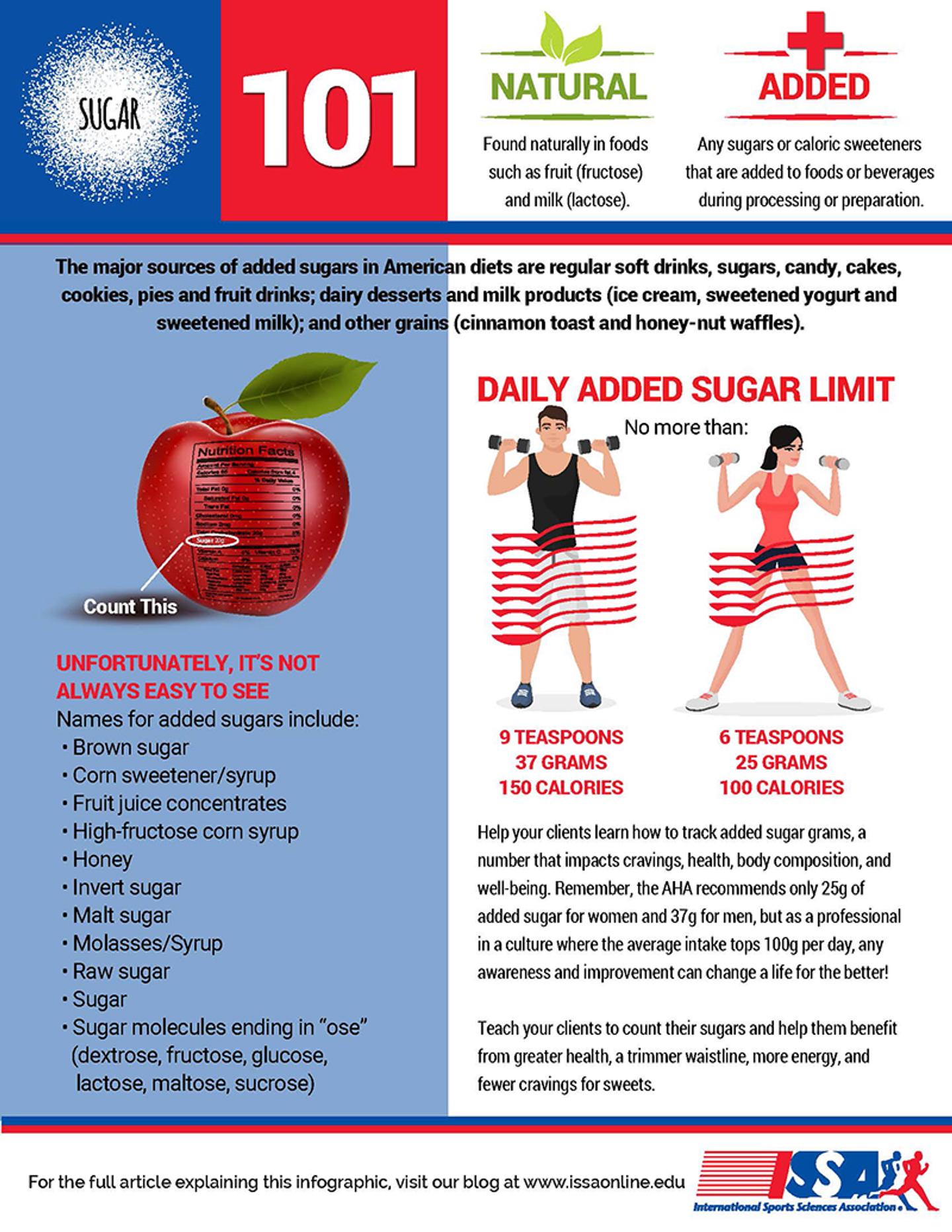
Why Everyone Should Be Counting Sugar
Reading Time: 3 minutes 30 seconds
BY: Alexander Van Houten
DATE: 2017-08-30
In the past few decades, health, fitness and wellness professionals have villainized fat, carbohydrates, eggs, coffee, and salt. But as we've come to evidence through scientific studies, anything in moderation is generally good for us (however, individual differences apply).
Now the buzz is all about sugar, but is it really as bad as the media and some professionals say it is?
As people living with diabetes already know, the grams of added sugar in our diet can affect every aspect of our lives and training goals. If we want to live healthier, happier, leaner lives, we need to be practicing and teaching an important life skill that all diabetic people are forced to learn:
Counting and paying attention to added sugar intake
As trainers, we need to understand and educate our clients on the danger of added sugar and how much is added to the foods we eat.
A diabetic person's life depends on this knowledge, perhaps yours does too?
Here are some important things to consider.
Increased Risk of Death
According to the AHA, the average man should eat no more than 37 grams and the average woman no more than 25 grams of added sugar each day to stay in the "low-risk" category for heart disease.
To put this into perspective, the average American eats 110 grams of added sugar daily.
This amount puts someone in the "high-risk of death" category.
When counting sugar, make sure your clients understand that added sugar does not include the sugar naturally found in whole foods, like plain, unprocessed fruit.
Featured Infographic
Click image to view full infographic or download PDF here and print for your clients.

Food Quality and Sugar Content
It's quality over quantity, right? There are mountains of studies to show how processed, low-quality foods cause obesity when compared to the same quantities of so-called "real food".[2]
Since most processed food is laden with added sugars while real food is not, having a daily sugar quota is a great way to cut back on foods that are not very nourishing,[3] and to be motivated to eat higher quality foods.[4]
Fewer processed foods mean less added sugar overall.
Bacteria Thrive on Sugar
Have you heard about the impact that gut bacteria has on body composition?
Gut bacteria may even affect fat storage more so than genetics, exercise, and diet combined.[5]
Diets high in sugar may support the growth of the "bad" bacteria that are linked to higher body fat percentage. So, counting and subsequently decreasing sugar consumption can change your clients' gut bacteria ecosystems for the better.
To put it simply, less sugar equals less "fatty" bacteria and more "athletic" bacteria.
Fat Storage
As all diabetics have been taught, consumption of sugar causes blood insulin levels to spike quickly.
One of the jobs insulin performs in the body is to switch from "fat-burning mode" to "fat storage mode." If your goal is to maintain a lean physique, causing an insulin spike is the last thing you want to do. Teaching your client to count grams of sugar can help regulate insulin and keep the body in the "fat-burning mode" all day.[6]
Lower sugar intake leads to a higher metabolism that burns more fat.
Sugar is Addictive
Did you know that sugar may be as addictive as nicotine, cocaine, and heroin?[7]
Since most of the sugar eaten in a day is found in the places you may not expect, your clients probably have no idea how bad the addiction is. Encouraging them to count grams of sugar is the first step in helping them understand and face the reality of their addictive cravings head on.
The fewer grams of sugar you eat, the greater the control over the addiction and willpower.
Start Counting
Our clients come to us with a lot of different goals and a thousand questions about how to get there. They trust us to be knowledgeable, to stay informed, and to have the answers.
Part of the art of being a trainer is to simplify all that we know into easily implemented practices that take a small commitment but return big results.
Help your clients learn how to track added sugar grams, a number that impacts cravings, health, body composition, and well-being.
Teach your clients to count their sugars and help them benefit from greater health, a trimmer waistline, more energy, and fewer cravings for sweets.
References
Barclay AW, Petocz P, McMillan-Price J, et al. Glycemic index, glycemic load, and chronic disease risk—a meta-analysis of observational studies. Am J Clin Nutr. 2008;87:627-37.
Claudia Wallis. How Gut Bacteria Help Make Us Fat and Thin. Scientific American. June 1, 2014.
Freudenrich, Ph.D., Craig. "How Fat Cells Work" 27 October 2000. HowStuffWorks.com. 30 December 2015.